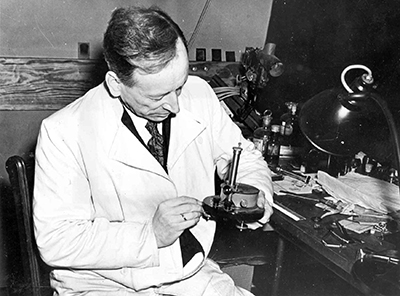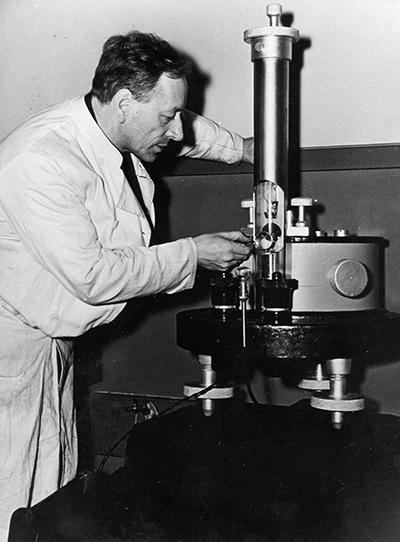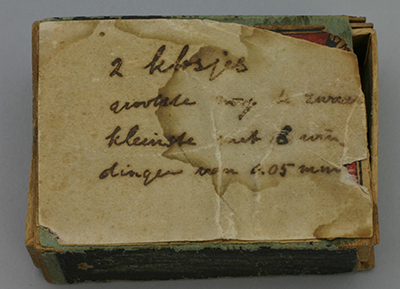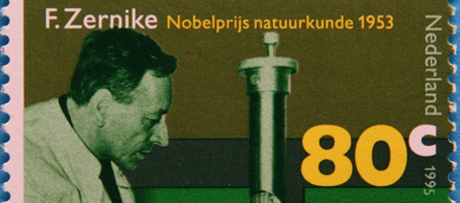Part 4: Of spool and mirror
Zernike wins the Nobel Prize with his invention of the phase-contrast microscope. And although this is his most famous invention, it is not his only invention. In this column we explain more about one of our favourites: the improvement Zernike made to the galvanometer.
First of all: what is a galvanometer? A galvanometer is an instrument that measures a small electrical current. In order to do so, the instrument consists of a dynamo. A dynamo creates an electrical current by a spool turning in a magnetic field. Just like a bicycle's dynamo, where the electric current generated by the dynamo turns on the bicycle's lamp. The reverse also works: connect a battery in stead of a lamp, and the dynamo will spin: it has become a motor with which you can measure the amount of incoming electrical current.
An electrical current creates a magentic field. The current can be measured by the reaction of a compass needle to the magnetic field: it causes the magnetic needle to rotate. The smallest deflection can be accurately observed by means of the angle of deflection of a light beam falling onto a small mirror. In order for the galvanometer to be as sensitive as possible, the parts of the instrument must be light and small.
For a long time it was thought the sesitivity of the instrument could not be increased, because the mirror (and therefore also the spool) had to be a certain size. Zernike however came up with the notion that the spool could be reduced in size. That way the instrument could make more accurate measurements: the modern galvanometer was born. That it was of big value, even though the instrument was initially relatively unknown, became clear when is was displayed at the World Exhibition in 1939 in New York. After that enlarged galvanometers were shown in musea and the instrument figured on stamps. An honour not bestowed on Zernike's phase-contract microscope.





